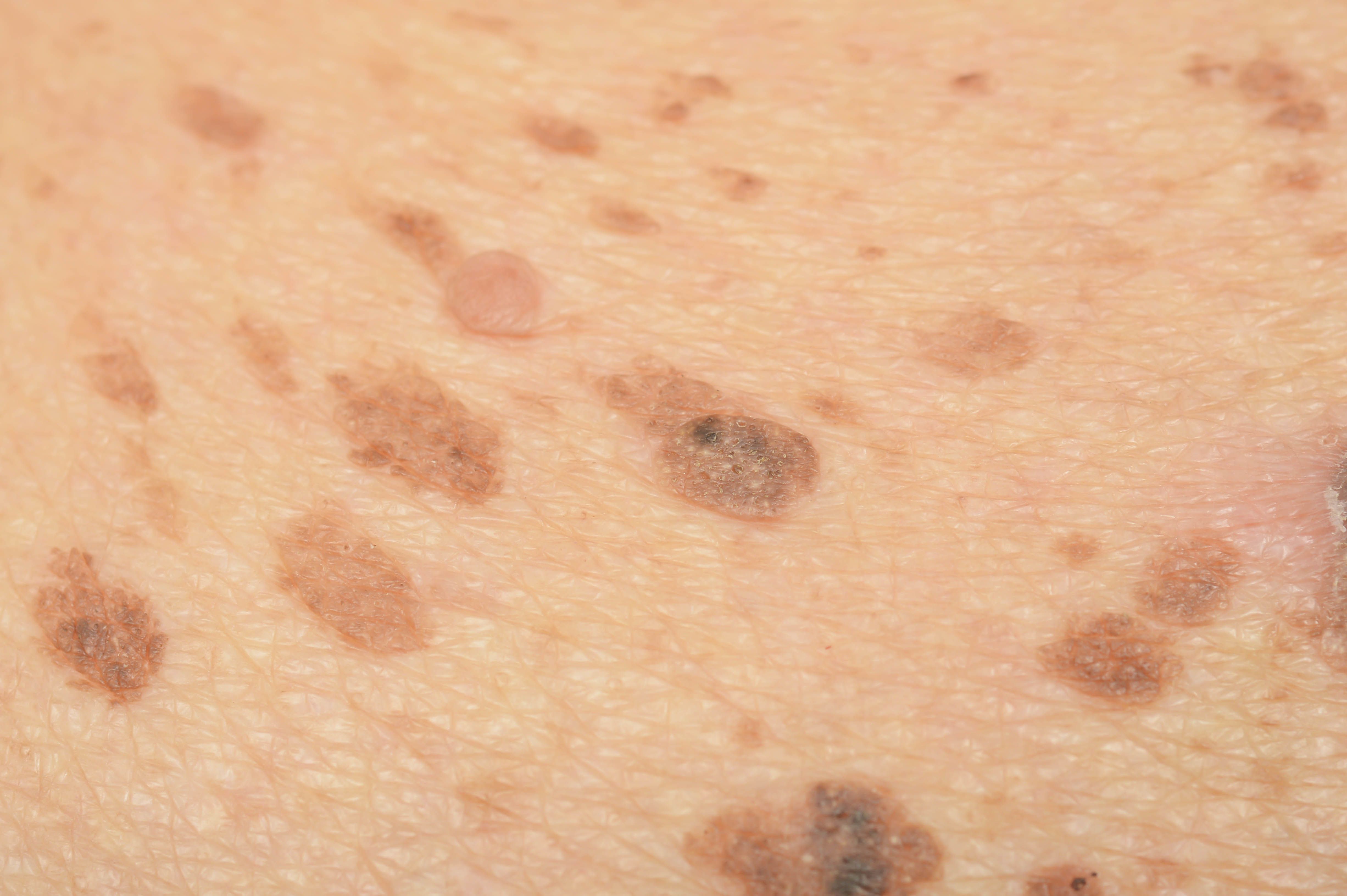- Case-Based Roundtable
- General Dermatology
- Eczema
- Chronic Hand Eczema
- Alopecia
- Aesthetics
- Vitiligo
- COVID-19
- Actinic Keratosis
- Precision Medicine and Biologics
- Rare Disease
- Wound Care
- Rosacea
- Psoriasis
- Psoriatic Arthritis
- Atopic Dermatitis
- Melasma
- NP and PA
- Skin Cancer
- Hidradenitis Suppurativa
- Drug Watch
- Pigmentary Disorders
- Acne
- Pediatric Dermatology
- Practice Management
- Prurigo Nodularis
- Buy-and-Bill
Article
Treatment options for benign lesions
Author(s):
Patients are increasingly seeking to have benign lesions removed and today, there are a number of treatment options available to safely and effectively remove unwanted lesions. Suneel Chilukuri, M.D., reviewed these options during a presentation at the Fall Clinical Dermatology Conference held this week in Las Vegas.
At the annual Fall Clinical Dermatology Conference, doctors review treatment options and costs for benign lesions. (©AdobeStock_187169456)

LAS VEGASâPatients are increasingly asking to have benign lesions, such as seborrheic keratosis, removed. Today, there are a variety of treatment options for these types of lesions. Suneel Chilukuri, M.D., reviewed these options during a presentation at the Fall Clinical Dermatology Conference held this week in Las Vegas.
“There’s definitely more options for a variety of treatments we have today,” said Dr. Chilukuri of Refresh Dermatology, Houston, during an interview with Dermatology Times. “As we expand our repertoire, we have to identify and recognize that patients are asking for treatment options.”
For seborrheic keratosis, treatment usually includes liquid nitrogen, electrodesiccation, hyfercation and curettage. Nonablative lasers, such as the Q-switched Nd:YAG and microsecond Nd: YAG, as well as ablative lasers, can also be used to treat seborrheic keratosis, but more recently, options like hydrogen peroxide 40 percent have become available.
“The most important thing is that you have to make sure it’s the right diagnosis, and as we see amongst our colleagues and some [others], not everyone is identifying these lesions properly and sometimes we may be treating things incorrectly,” Dr. Chilukuri said.
Dr. Chilukuri and Roger I. Ceilley, M.D., of Dermatology P.C. in Des Moines, Iowa, cited data from a recent study showing cutaneous malignancies can present as seborrheic keratosis. In the study, 3 percent of submitted lesions were misidentified as seborrheic keratosis or irritated seborrheic keratosis when they were actually malignancies.
“If you’re not really good at diagnosing seborrheic keratosis and you don’t see the classical dimpling and so forth, some of these are misdiagnosed,” Dr. Ceilley said.
Not all treatment modalities are or need to be expensive, Dr. Chilukuri said. For example, chemical peels for treatment of seborrheic keratosis are relatively inexpensive and can cost as little as 50 cents. “The question becomes: Are they delegable? Are they something we can have our office staff help us with?”
Electrodesiccation requires an initial investment of $750 to $1,500 with a low reoccurring cost, but is not easily delegable, Dr. Chilukuri said. With regard to hydrogen peroxide 40 percent, Dr. Chilukuri has seen a 94 percent success rate in treating patients with head and neck seborrheic keratoses. Although patients may experience stinging, erythema and edema within the first 10 minutes of treatment, these side effects largely subside by 15 weeks post-treatment. The cost is between $104 and $150 for treatment of up to seven lesions, but Dr. Chilukuri said a recent FDA trial reported “underwhelming” results he attributed to grouping lower clearance areas with head and neck cases, which have shown better success.
Dr. Chilukuri said that topical 40 percent hydrogen peroxide is not for every patient. Patients with raised, papular seborrheic keratoses on the head and neck are most likely to benefit, with a lower clearance rate on the legs. “It’s a very limited percentage of patients that are going to be treated with this particular device,” he said.
“I feel like we’re in the early days like botox, where we’re going to get better at what we do and the learning curve is going to be steeper,” Dr. Chilukuri said in an interview. “There are going to be the innovators. I’m in the group-at least for this particular product-that we’ll call early adopters. Then there are going to be the early mainstream, late mainstream, and then there are going to be the laggers, the ones who are never going to be purchasing something like this.”
“I think it’s key to remember that there are options,” he said.
DISCLOSURES
Dr. Ceilley is a speaker, consultant, or investigator for AbbVie, Aclaris Pharmaceuticals, Aquaderm, Biofrontera, Cynova Labs, Dermia, and Ferndale Healthcare. Dr. Chilukuri is a speaker, consultant, or investigator for Aclaris, Alastin Skin, Allergan Aesthetics, BTL Industries, Cynosure Lasers, Dominion Aesthetics, Galderma Aesthetics, InMode, Lutronic, Merz, PCA Skin, Skin Medica, Suneva Aesthetics and Theravant Lasers.





